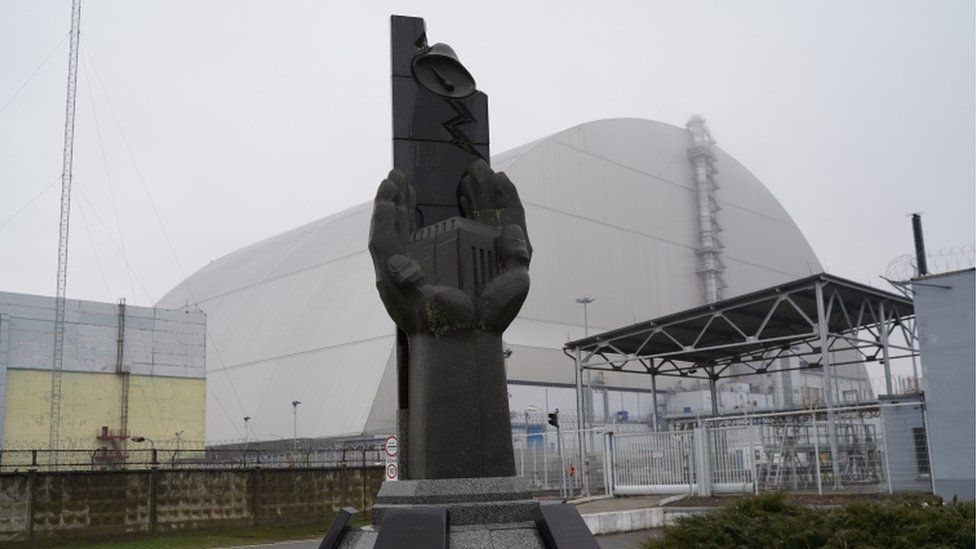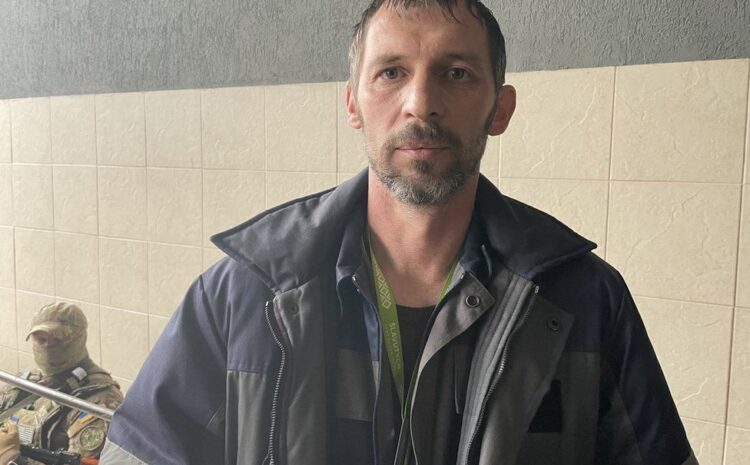
Image caption, Engineer Valeriy Semonov, who works at Chernobyl’s former nuclear plant, said he scrambled to find fuel to keep the generator running
By Yogita Limaye
BBC News, Chernobyl, Ukraine
The former nuclear power plant at Chernobyl in northern Ukraine was taken over by Russian forces on the first day of the invasion. It’s now back under Ukraine’s control. The BBC’s Yogita Limaye is among the first journalists to look inside it since the Russians left.
On the afternoon of 24 February, Russian forces surrounded Chernobyl with tanks and armoured vehicles, entering Ukraine from the Belarusian border, just about 16km (10 miles) away.
About 170 Ukrainian national guards who secured the plant were taken to the basement and held captive there. Then Russian soldiers searched the premises for weapons and explosives.
Engineers, supervisors and other technical staff were allowed to continue working. In the next two days, teams from Russia’s atomic energy agency Rosatom were brought in.
Chernobyl’s staff were keen to keep control of the plant’s maintenance. It’s not a working power station, but radioactive waste is stored at the site of the world’s worst nuclear disaster. Billions of dollars have been spent since the accident in 1986 to clean up and contain further contamination. If conditions at the site are not monitored properly, there is a major risk of the release of nuclear material.
On the top floor of the main building of the power station are key rooms from where the site is controlled, located on both sides of a long, narrow passage. Some of the rooms were locked. When the Russians didn’t find the keys, they broke into the rooms, cutting out the portion of the door in which the lock was embedded.
“We had to constantly negotiate with them, and try hard not to offend them, so that they allowed our personnel to manage the facility,” said engineer Valeriy Semonov.
When the power to the station was cut off for three days, Valeriy said he scrambled to find fuel to keep the generator running, even resorting to stealing some from the Russians.
“If we had lost power, it could have been catastrophic,” Oleksandr explained. “Radioactive material could have been released. The scale of it, you can well imagine. I wasn’t scared for my life. I was scared about what would happen if I wasn’t there monitoring the plant. I was scared it would be a tragedy for humanity.”
The area behind the plant called the “Red Forest” is one of the most radioactive places on earth. Drone footage released by the Ukrainian military shows that Russian soldiers dug trenches and even stayed there. This was also confirmed to the BBC by officials at the station.
It’s evidence of how little the soldiers knew about nuclear safety.
 IMAGE SOURCE, REUTERS
IMAGE SOURCE, REUTERSJust outside the sarcophagus which protects the damaged nuclear reactor, Russian soldiers piled up sandbags behind which they could hide if attacked. Valeriy scoffed at this, saying the Ukrainian military wouldn’t dream of firing at a nuclear reactor.
Down in the basement of the main building, are dormitory style rooms which have been completely ransacked. The floor is littered with rugs, mattresses, clothes, shoes and other personal belongings of the Ukrainian national guard who were held there. Officials at Chernobyl say Russian soldiers looted what they could when they left, and they also took the captive members of the national guard with them.
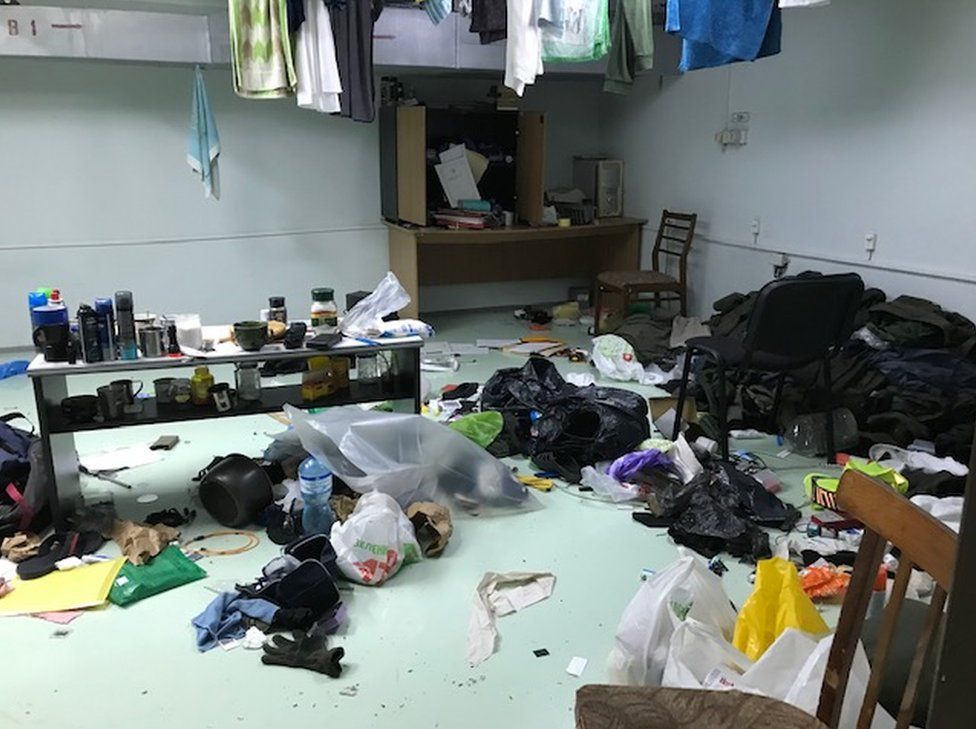
“We were able to keep the site safe. But it’s upsetting that they took 169 of our military,” said Valeriy.
It’s not confirmed where the men are being held, but Chernobyl’s staff believe they are in Russia.
Petro Poroshenko, Ukraine’s former president, visited Chernobyl on Friday with food and other supplies for the plant’s personnel. Access to it has only just opened up through an off-road track. The bridge to Chernobyl was blown up to stop Russia’s advance.

President Poroshenko has a warning for the world.
“Are we sure that tomorrow Russian troops cannot appear here? My answer would be no. Putin is completely unpredictable. And nuclear smoke is not limited by borders. It can reach Eastern Europe, Central Europe, and even Great Britain. The danger of nuclear contamination of Europe is very high, while Russia continues this war.”
Additional reporting by Imogen Anderson.
-
Russian troops leave Chernobyl, Ukraine says
1 April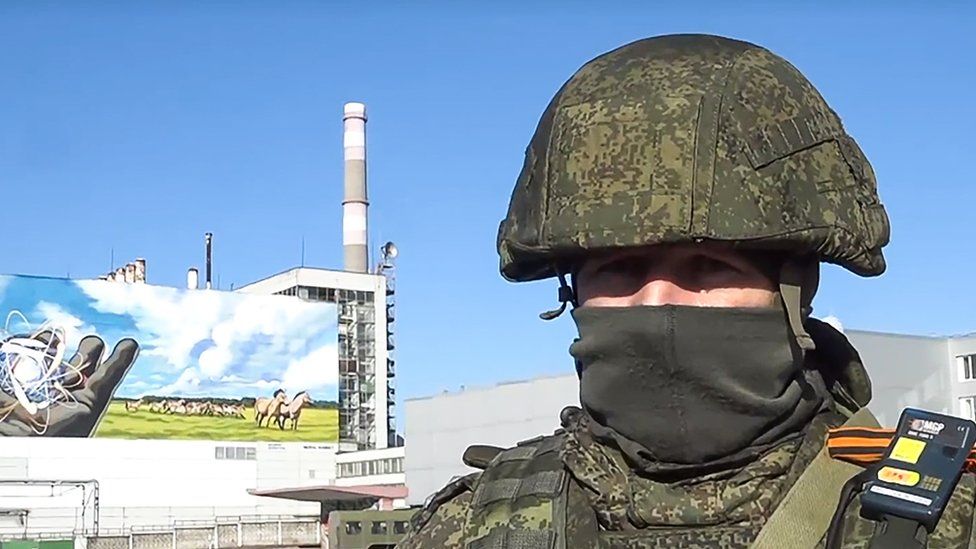
-
Chernobyl power supply cut off, says Ukraine
9 March
-
How close was nuclear plant attack to catastrophe?
4 March
-
Why there was a radiation spike at Chernobyl
25 February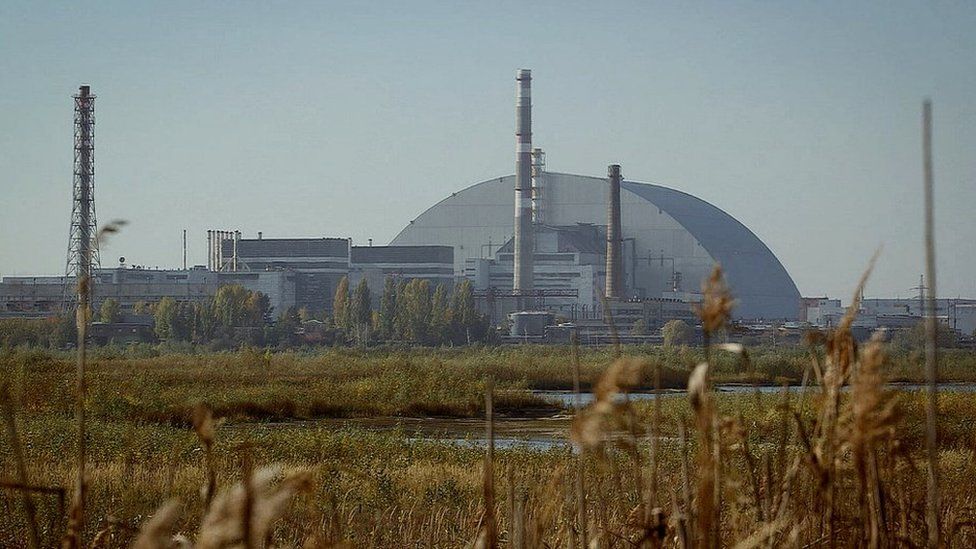
-
Russian forces seize Chernobyl nuclear power plant
25 February